|
|
|
Stray Musings
of a
Hopeless
Hey! I'm Gary Banerjee.
Welcome to my webspace. This is my personal home page,
although you will find a few of my professional links.
Come back again later for more of the good stuff.
Today's date is November 11, 1997.
This website is supposed to be perennially under construction
– I hope to be up content as and when I find the time
and the inclination.
The reasons why I built this website are as follows:–
(4) I craved a forum that'd let me get in touch with my inner nerd
& artsy web-head K,
(3) I needed a platform to vent some of my existential angst,
(2) I yearned to harness some real benefit out of that time-honored
tradition of egotistical men – talking about Yours Truly, and
(1) My server-racks humored and lured me with lotsa space.
Baby, I got space . . . . yeah!
So here goes! The internet edition Gary Banerjee story (US$24.95
in hard cover from Penguin Books – J
just kidding), unfolds in the following sections of this website.
Contents

I'm originally from the subcontinent of India –
the beautiful and mystical land that has cradled the world's largest
modern democracy and its oldest civilization. Home of the world's
best computer programmers and doctors, India is a much-maligned
and misunderstood nation of incredible paradoxes – extreme
poverty and fantastic wealth, teeming urban wastelands and enchanted
palm-fringed beaches. The wildly clashing images of this magical
land – of Royal Bengal tigers in steaming tropical rain-forests
and yetis in the snowy Himalayas, of peacocks dancing in the monsoon
rains and camels sailing across the desert, of turbaned maharajas
astride elephants playing polo and whirling dervishes walking on
fire and climbing into the clouds on magic ropes – all coexist
in a time-honored uneasy peace.
Sounds
of India
Click
Here to listen a piece of Indian Sitar Music, OR, CLICK
HERE to listen to the National Anthem of India – a 110
second MIDI rendition of "Jana gana manayadhi nayaka jaya
hay . . . ." – composed almost a century ago by India's
pre-eminent national poet, Rabindranath Tagore, the first non-European
Nobel Laureate, ranked with Leonardo da Vinci and Wolfgang Von Goethe
as one of the three most versatile and erudite renaissance geniuses
of all time. Tagore wrote primarily in the Bengalee language and
was a friend of the Irish poet William Butler Yeats, who translated
a lot of Tagore's works into English.
After the MIDI sequence(s) is/are over – press the "Refresh"
or "Reload" button of your browser.
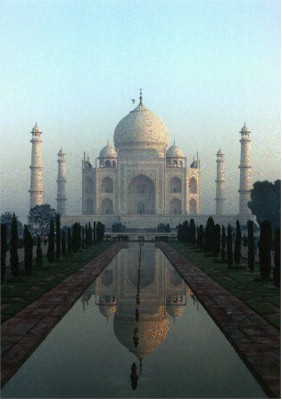 Images of India Images of India
Described as "poetry in stone"
and widely acclaimed as the world's most beautiful man-made edifice,
the Taj Mahal is a mausoleum built with virgin marble quarried from
the Rajputana desert, jewel gold and inlaid diamonds, rubies, emeralds
and sapphires from across the gemstone-rich subcontinent. Its construction
was started in Agra, North India, in 1631 AD, and took many decades
– by varying estimates, between 20,000 and 80,000 artisans
gave their lifetime labor to the making of the Mahal.
The edifice was built by the Mughal Emperor Shah Jahan
– to etch in eloquent stone his love for his wife, the Princess
Noor Jahan (meaning "The Light of the World"). Noor Jahan,
held to be the most beautiful woman of the known world of her time,
was originally the wife of another man, but she became Shah Jahan's
bride after an incredible and very turbulent romance – a courtship
that spanned over a decade. Although the Taj Mahal was a commemoration
of the passion of Shah Jahan and his sweetheart, it remains a celebration
of their love even in their passing – the last mortal remains
of the Emperor and his beloved lie in a vault beneath the Mahal,
consummating their immortal love for all eternity.
I saw the Taj Mahal for the first time when I was
a boy, and have seen it myriad times since, but every time I see
it – it's like the first time. I am proud that the Taj Mahal
is a part of my heritage, a heritage that shapes and defines me:
that is a part of who I am. And I am fascinated with it.
There are many ways to see the Taj Mahal, any of which
would take one's breath away. But in my opinion, the best way to
see the Taj Mahal for the first time is to take a right-hand-side
(southwest-facing) seat in a First Class cabin on the midnight train
from Delhi, the Indian capital, to Agra, on a bright moonlit night.
As the train speeds towards Agra, along the glimmering
banks of the Jamuna river, it winds up a rolling upland, its mighty
monstrous metallic engine hissing and panting steam. A pregnant,
sleepy silence descends upon the sounds of the night – there
is the faint scent of Jasmine or Gardenia, and Balsam, in the gossamer
breeze, and perhaps the smell of new rain upon the dry earth.
As the train atops a hill – all of a sudden the
Taj Mahal appears: like a transcendental dreamscape – into
one's sight. There is a sharp collective gasping intake of breath
– and all the air a sudden stillness holds, as everyone seems
to hold their breath. Gradually, one comes back from the reverie,
and begins to internalize the ethereal, celestine beauty of the
strangely angelic, delilaic vision accosting their senses,
sweetly, seductively. There is a collective sigh of wonderment,
and contentment, and expelled breath in the silent night. One is
swept over by a deep feeling of abiding peace, a feeling that everything
will be all right, and one remembers falling in love that first,
most wonderful time, reliving perhaps the recesses of one's faraway
youth.
There it sits, the Taj Mahal, serenely and with quiet
mastery upon the ancient Gangetic plain, as if it were a piece of
the moon itself, that had fallen upon the earth but still belonged
to the starry sky. Its marble minarets reaching out towards the
glistening stars, the enchanted creamy whiteness shimmers in the
moonlit calm of the fragrant Northern Indian night, its silence
disturbed only by the monotonous chant of the train hurtling through
the darkness, the low steady droning hum of the crickets in the
night, and the quite poetic evensong of the Jamuna river –
singing unrequited its lays of lost loves of long ago and tales
of distant victories and vanquishment that once had scribed in the
madrigal of history's pages upon this most ancient land of Vraj
Bhumi.
The Taj Mahal is only one of literally tens of thousands
of India's architectural treasures. 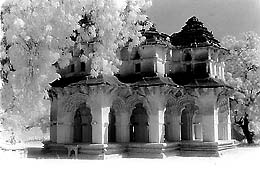 India is a mosaic of myriad races, religions
and cultures, speaking over 700 mutually unintelligible languages
– of a staggering diversity. The ethno-linguistic heritage
of North India is from Sanskrit, a classical language of the Indo-European
or Indo-Aryan family, closely related to classical Greek, Ostrogothic
and Latin. North Indian languages like Hindi or Bengali (the language
with the fifth largest body of literature in the world), are philologically
closer to German, French or English, than to the South Indian languages
like Tamil or Telugu. South India has an equally rich, but very
different heritage, with its ethno-linguistic roots in another ancient
language – Dravidian – unrelated to the Indo-Aryan family.
Above left is an image from Southern India. India is a mosaic of myriad races, religions
and cultures, speaking over 700 mutually unintelligible languages
– of a staggering diversity. The ethno-linguistic heritage
of North India is from Sanskrit, a classical language of the Indo-European
or Indo-Aryan family, closely related to classical Greek, Ostrogothic
and Latin. North Indian languages like Hindi or Bengali (the language
with the fifth largest body of literature in the world), are philologically
closer to German, French or English, than to the South Indian languages
like Tamil or Telugu. South India has an equally rich, but very
different heritage, with its ethno-linguistic roots in another ancient
language – Dravidian – unrelated to the Indo-Aryan family.
Above left is an image from Southern India.
  After a life bequeathed to the Muse of Wanderlust
and sojourns in many lands, I reached America in the '80s –
the Land of the Free and Home of the Brave, and decided
to join the ranks of The Immigrant American. After a life bequeathed to the Muse of Wanderlust
and sojourns in many lands, I reached America in the '80s –
the Land of the Free and Home of the Brave, and decided
to join the ranks of The Immigrant American.


I have really had a wonderful time throughout my executive career
in international business the past many years – enjoying myself
greatly and learning constantly. A close look would take up more
than a resumé – but I'd say that the three greatest experiences
of my professional life have been:
 1) going to the former Soviet Bloc
in the aftermaths of Glasnost, Perestroika and
the fall of communism, and developing marketing and business strategies
and partnerships with some young and entrepreneurial companies in
the fledgling market democracies of Central and Eastern Europe, 1) going to the former Soviet Bloc
in the aftermaths of Glasnost, Perestroika and
the fall of communism, and developing marketing and business strategies
and partnerships with some young and entrepreneurial companies in
the fledgling market democracies of Central and Eastern Europe,
2) helping to set up the Latin American operations from scratch
for a large US corporation, and
3) fighting for the passage of a NAFTA/GATT platform on Capitol
Hill through the 104th Congress of the United States.
I have worked as an international business consultant, marketer
and entrepreneur. My professional passion, and personal consuming
passion, is international trade.
Frontiers, a company I promoted, works to promote
US foreign trade. I've had a good bit of experience with Latin America
and the Middle East in the past, and more recently, in the former
Soviet Bloc countries in Central and Eastern Europe. Frontiers
offers agency services to foreign companies who wish to conduct
business in the USA, and certain other foreign markets, notably
Romania, Poland, Ukraine and former Soviet Central Asia – we
will be expanding into other markets in the future. We also provide
consulting services for Joint Ventures, Mergers and Acquisitions,
Technology Transfer, Privatization, Market Entry and Business Development,
as well as Marketing, Strategy and General Management.
I started Frontiers after a successful executive career in the
international arena spanning many years on many continents. The
original mandate was to provide consulting assistance to NIS businesses
with Privatization, but that gradually evolved to include hands-on
export assistance, liaisoning, sales representation and marketing.
We promote the Anastasia line of porcelainware, the marketing
foundation of which is anchored in a (fictional) fairytale I concocted
– The Story of Anastasia.
My primary professional involvement, however, is with another,
and a very different business – Models Inc.
/ Aaron Windsor Rothschild /
AYBC – a web-centric
Talent and Entertainment Industry Services organization (focussing
on Face Factoring – the brokerage of Faces, generally
New Faces, to the Entertainment Production industry
– and the online marketing of Models and Talent – to employers
both within and outside Hollywood).


There are myriad aspects of every human being that transcend a
resumé of their actions and accomplishments. This is their inner
self – made up of their thoughts and feelings, their spirits
and souls. I too have such an organic personal self – the confluence
of the real, the unreal and the surreal me, the philosophical, the
quasi-rational and the goofy. This section, and in large part this
page, deals with that other, more personal me.
How Green is My Valley

On the personal front, I have gotten a lot of mileage out of my
life – I have lived my life heretodate very fully, and have
few regrets.
My life is still very full, as it always has been, brimming with
exciting possibilities and mesmerizing hopes. Although I have had
more than a full share of challenges, I have always viewed the world
as a glass half full of water – the other half waiting to be
filled by me. I love challenges, and love to play the game of life
that is filling that other half of a glass half-full. To me, the
world is an amazing place – filled with beauty, joy and goodness,
exciting challenges, fantastic solutions and incredible opportunities.
"Beauty is Truth," said the poet John Keats, "and
Truth, Beauty". Beauty is everywhere – in every brick
and every stone, in every breath of air, every  heartbeat, in every flower and blade of grass.
I have seen it in crocuses fighting to bloom in the dirty snows
of the harsh Moscow winter; in children at play in the street by
an old and run-down church in Salvador, Bahia, in Northeastern Brazil;
in quiet ripples on Beaver lake in Lost Valley, Arkansas; in the
mullah's call to evening prayer to the faithful from the mosque-turrets
of a cobblestoned Cairo street; in the Saigon sunset as the sun's
orange-gold orb dips into the China Sea. I am very grateful for
the gift of life and the grace of God, and every day – I have
a prayer of thankfulness. Many people have been very surprised at
my attitude, and have asked why I feel this way. I have thought
about it. My mind, spirit, thoughts and the experiences I have had
make me who I am. Because I have "quaffed life's cup to the
lees," "my cup runneth over." Of course, one man's
cup of hemlock is another's cup of wine, but I think that it has
been through the losses, failures and challenges that I have learnt
to live, and love life, and appreciate the world in which I live.
I think it has been the most challenging experiences that have made
my life so memorable and my memories so rich, heartbeat, in every flower and blade of grass.
I have seen it in crocuses fighting to bloom in the dirty snows
of the harsh Moscow winter; in children at play in the street by
an old and run-down church in Salvador, Bahia, in Northeastern Brazil;
in quiet ripples on Beaver lake in Lost Valley, Arkansas; in the
mullah's call to evening prayer to the faithful from the mosque-turrets
of a cobblestoned Cairo street; in the Saigon sunset as the sun's
orange-gold orb dips into the China Sea. I am very grateful for
the gift of life and the grace of God, and every day – I have
a prayer of thankfulness. Many people have been very surprised at
my attitude, and have asked why I feel this way. I have thought
about it. My mind, spirit, thoughts and the experiences I have had
make me who I am. Because I have "quaffed life's cup to the
lees," "my cup runneth over." Of course, one man's
cup of hemlock is another's cup of wine, but I think that it has
been through the losses, failures and challenges that I have learnt
to live, and love life, and appreciate the world in which I live.
I think it has been the most challenging experiences that have made
my life so memorable and my memories so rich, 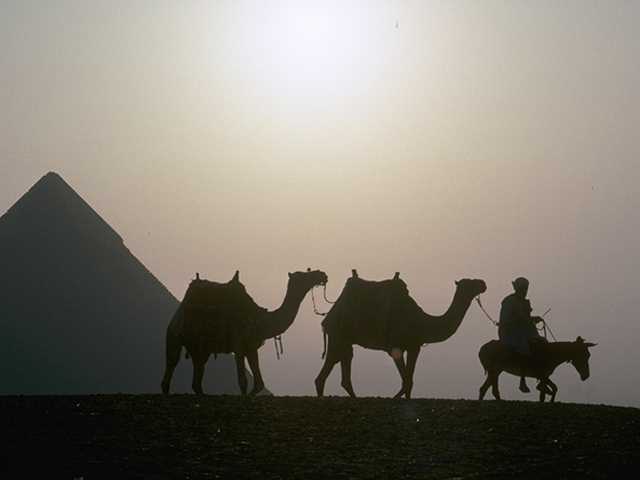 leaving me intoxicated
with the wine of life and thirsty for ever more – like: leaving me intoxicated
with the wine of life and thirsty for ever more – like:
 • Living through momentous
personal tragedies, wars, a plane crash at sea, being lost in the
desert, learning to survive and be strong in the twilight zones
of the human experience. • Living through momentous
personal tragedies, wars, a plane crash at sea, being lost in the
desert, learning to survive and be strong in the twilight zones
of the human experience.
• Coming to America, with almost no money in my pocket.
• Fending my way through grad school on merit scholarships
of exquisite slimness, fighting to keep the marriage alive between
body and soul, staying afloat in the underbelly of life.
• Meeting a truly great American, (name withheld), who changed
my life and beliefs, and remains, posthumously, my personal character-ideal
and role-model.
• Surviving, and actually greatly enjoying the rat-race of
Corporate America.
• Seeing the birthing pangs and labor pains of the childbirth
of democracy and free enterprise in the Newly Independent States
and former communist countries of the Soviet Bloc.

Travel and Seeing the World

I love to travel and have spent most of my life traveling, having
been on all six inhabited continents. Sometimes I think I've spent
more of my life at airports, harbors and hotels, on trains, planes
and highways, than near any home or hearth. 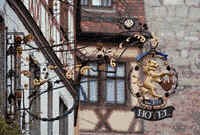 I have been always
fascinated by I have been always
fascinated by  foreign cultures and
civilizations and lands and peoples: their food, music, literature,
dance, theatre – all the way to their very philosophical bases
and spiritual cores. The study of world events, the present-day
march of history across our lives and times, the ways in which nations
and peoples come together to run their lives and communities and
countries, and the greater human civilization, are very interesting
to me. What interests me in particular is the way our very diverse
cultures and histories help and hinder, handicap and facilitate
us in this process. Each significant cultural group in the world
has a very different past and a unique value system, but together
we all face a common destiny in a planet that grows ever smaller.
I see trade as the great forger of unity in diversity in this evolutionary
social intercourse. The study of international trade is therefore
of paramount interest to me. foreign cultures and
civilizations and lands and peoples: their food, music, literature,
dance, theatre – all the way to their very philosophical bases
and spiritual cores. The study of world events, the present-day
march of history across our lives and times, the ways in which nations
and peoples come together to run their lives and communities and
countries, and the greater human civilization, are very interesting
to me. What interests me in particular is the way our very diverse
cultures and histories help and hinder, handicap and facilitate
us in this process. Each significant cultural group in the world
has a very different past and a unique value system, but together
we all face a common destiny in a planet that grows ever smaller.
I see trade as the great forger of unity in diversity in this evolutionary
social intercourse. The study of international trade is therefore
of paramount interest to me.
of Art and Culture . . . .

I am not very erudite on matters of visual art appreciation, but
I do like the renaissance painters – Boticelli, Rembrandt,
Michelangelo, Monet and many others. My favorite painting is Van
Gogh's L'Eglige d'Ouvre (?), at the Jeu d'Pomme
in Paris.
I love good music of almost any kind. I like opera and good violin
music – Paganini or Verdi, the jazz of Miles Davis and Louis
Armstrong. I have had pleasant interludes with music as different
as ska, country and rap, and am fond of folk music from different
regions of the world – Scottish, Zulu, Swahili, Kartulis (from
the Caucasian mountains of Georgia), and Himalayan music from Kashmir
and Nepal. I also love Carnatic and Hindustani classical music.
Seeking a philosophical education, I have suffered some Kafka,
Dostoyevsky, Kant and Nietzche, but prefer the discourses of some
of the classical thinkers – Socrates, Plato, Marcus Aurelius
and Seneca. Of the later western savants, I favor Machiavelli, Eckehart,
Ruysbroek and Suso. I am also drawn to the great Indian metaphysicians
and sages – from Manu, Vrigu, Kalidas, Nagarjun or Chanakya
in ancient times – all the way to Gandhi, Vivekananda, Ramakrishna,
Dr. Sarvapalli Radhakrishnan, Krishnamuthi or Chinmayananda in the
modern period.
I love poetry selectively – the "Romantic Period"
generally. My favorites include Shelley, Keats, Scott, Browning,
Tennyson, Pope, Milton and Brooke – an odd collection. I also
love the Chilean poet Pablo Neruda; the immortal minstrel of Romania
Mihai Eminescu; the Indian poet Rabindranath Tagore, and several
other Indian poets who wrote in Urdu or Bengali. The literary vehicle
I like best though is the "short story". My favorite authors
in this category include O'Henry, W.Somerset Maugham, Guy de Maupassant
and Anton Chekov. Last, but definitely not least, I am a sucker
for a good novel, be it a classic or a thriller: everything from
Adam Bede and Silas Marner and Wuthering Heights,
Mark Twain's Tom Sawyer (I recollect having a crush on
the character Becky Thatcher while reading that, in the
springtime of my youth), and anything by Ernest Hemingway –
to Frederick Forsyth's Odessa File or Scott Turow's Presumed
Innocent, and even James Hadley Chase's To Chase a Crooked
Shadow; not to mention the assorted treasures of P.G. Wodehouse,
Sir Nevil Shute, Agatha Christie, Earl Stanley Gardner, Harold Robbins
or Mary Higgins Clark. Oh, and I believe that the best modern American
literary works include Robert Pirsig's "Zen and the Art of
Motorcycle Maintenance", and Waller's romantic classics –
"The Bridges of Madison County", and the one I thought
was even better – "Slow Dance at Cedar Bend."
I'm also fond of a few playwrights – Brecht, Ibsen, Ionesco.
I used to act once, and left the theatre after one of my best performances
was critiqued by a highly acclaimed professional reviewer as "a
triumph of mindlessness over matter," and credited with taking
the character I was playing to "a new low." The same critic
also characterized my theatrical debut, in an amateur production
of Ibsen's A Doll House, as a "miscarriage of injustice"
– a fine turn of phrase the fellow had, but what does he really
know, anyway, right?
I like the cinema, theatre and literature generally – and
my fondest aspiration is to be able to retire someday to work on
my "other" career as a writer. I know enough to realize
that I probably could not make a living at it. Like all persons
of this persuasion: yes – I Want To Write A Novel. I want to
write at least one great novel, based perhaps on my life and times
– a chronicle of the lives I have lived, the loves I have loved,
the experiences I have had and from whose spoils or ashes I have
risen and grown. But a part of me also screams to be a political
humorist or a playwright. Fortunately, I don't have to figure it
all out just yet – my days as a writer are a long ways away.
In school and college, I was an enthusiast of journalism, poetry
recitation, general knowledge quizzing (like Jeopardy on TV). Law
school allowed me to indulge my love of debate, ex tempore and volte
face speaking. I was also an activist at heart then – a rebel
without, and sometimes with a cause, who sought out advocacy as
a means of finding himself, and of venting his burning desire to
right all the wrongs in the world, real or imagined. But I am a
pacifist now. Where I once saw culture as a blood sport, an exercise
in exertion and active participation where almost anything was fair
game – today I see culture as more a spectator sport: free
to just view, appreciate and enjoy.
The Good Life and the Epicurean Within
  
I love to experiment with gourmet cuisine. Which is to say –
I love to eat, eat well, and do so frequently and with a reasonably
virtuous-sounding excuse for doing so. I also love to cook, generally
exotic foreign food. How well do I cook? – opinion is divided!
Some of my more polite friends argue that I am perhaps a designer
cook (nothing I cook can be recreated). Some others have spoken
of religious experiences – from the Book of Revelations. And
then again, I say what I lack in talent, I make up for in enthusiasm
– that's my story and I am sticking to it. While I would
be too bold to consider myself either a sommelier of fine
wines, or a true connoisseur of single malt scotch whiskies, I certainly
have dabbled a bit in both. I am particularly fond of Cardhui and
Lagavulin. 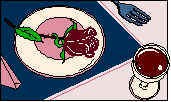  With wines, I have a taste for dessert
wines, sweet white wines like Liebfraumilch and some Romanian wines
from the Murfatlar. I am an extrovert – outgoing, gregarious
and social – far past the tortured moments of my days as a
would-be campus poet and armchair idealogue. While my wild college
days are a thing of the past, entertaining with friends or an evening
on the town are always prospects that attract. And although possessed
of the two left feet of a particularly choreographically-challenged
elephant, I love dancing anyway – not just modern dancing,
but the ageless classics like the waltz and foxtrot, and also the
samba, merengue, lambada and my favorite: the Argentine tango. With wines, I have a taste for dessert
wines, sweet white wines like Liebfraumilch and some Romanian wines
from the Murfatlar. I am an extrovert – outgoing, gregarious
and social – far past the tortured moments of my days as a
would-be campus poet and armchair idealogue. While my wild college
days are a thing of the past, entertaining with friends or an evening
on the town are always prospects that attract. And although possessed
of the two left feet of a particularly choreographically-challenged
elephant, I love dancing anyway – not just modern dancing,
but the ageless classics like the waltz and foxtrot, and also the
samba, merengue, lambada and my favorite: the Argentine tango.
Gary the Sportsman and Lover of the Great
Outdoors

Football, rugby, tennis, cricket, squash and horse-riding were
all my sports through school and college. Later, I got into
scuba-diving and sailing a little bit. An avid sportsman, not quite
champion grade, I participated widely. I was never the hunting and
fishing type – growing up in urban settings sort of precludes
that. But I have always been very attracted to the outdoors. That's
why I love horse-riding – to be able to ride out someplace
"far from the madding crowd." I also like to photograph
the wilderness. An inept skier, infrequent golfer, out-of-balance
surf dude and out-of-breath hang-gliding enthusiast, the sports
I best like to relax with today are canoeing in summer, camping
and dog-sledding (my favorite) in winter (if I can get to a suitable
winter wonderland).
Pictures above:
-
Bottom Left– Alaska (near Fort Yukon),
my dog team and I racing through the snowy forest.
-
Top Right – The Patagonian Andes (near
San Carlos de Bariloché, Argentina): some friends & me (2nd
from right), with our sledges.
-
Bottom Right – Siberia (Tungska valley,
not too far from Lake Baykal): Yevgeny and myself (right), resting
our Huskies after a long ride.
Going camping in the mountains is great fun, both winter and summer.
I love going up to the continental divide in Colorado or Montana,
and to the Peruvian or Chilean Andes. 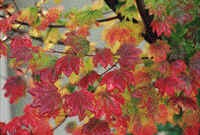 I think what appeals to me most
about these high ranges is the majesty of the mountains, which gives
me a feeling of peace and communion with nature, and perhaps a degree
of humility at the magnificence of creation around me. Canoeing
is plentiful in the NW Arkansas Ozark Mountains – the place
I've called home for several years. I have a friend who has a large
rural property on the shores of nearby Beaver Lake. A real quiet
spot, covered with lush green forests and hidden away in the hills
– someplace very few people can get to. I love to hang out
there and watch the deer, bald eagles, wild turkeys and other wildlife;
and just to go for walks in the still of the forest, or spend an
afternoon reading a book down by a bubbling brook or clear mountain
stream. The fall is a wonderful time to be out there, when the leaves
are turning, and nature explodes into a rhapsody of dizzy colors. I think what appeals to me most
about these high ranges is the majesty of the mountains, which gives
me a feeling of peace and communion with nature, and perhaps a degree
of humility at the magnificence of creation around me. Canoeing
is plentiful in the NW Arkansas Ozark Mountains – the place
I've called home for several years. I have a friend who has a large
rural property on the shores of nearby Beaver Lake. A real quiet
spot, covered with lush green forests and hidden away in the hills
– someplace very few people can get to. I love to hang out
there and watch the deer, bald eagles, wild turkeys and other wildlife;
and just to go for walks in the still of the forest, or spend an
afternoon reading a book down by a bubbling brook or clear mountain
stream. The fall is a wonderful time to be out there, when the leaves
are turning, and nature explodes into a rhapsody of dizzy colors.
Bumming on the Beach

Of course, beaches are the best place to just vegetate. 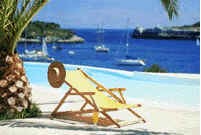 The US has some great
beaches, and I have seen some awesome beaches on the Black Sea in
Romania and Crimea, and on the Mediterranean, the Aegean and the
Caribbean, but I believe that the best place in the world for a
beachside vacation is the northeast of Brazil. Of course the best
time to be in Brazil is in February, during the Carnaval.
It gets quite wild and very touristy in Rio, where most gringos
go. But in the tropical paradise of the northeast, around Salvador,
Fortaleza and Recife, Brazil exhibits a great deal of character
and retains a much more authentic old-world Portuguese flavor –
reminiscent of the days of the pillaging conquistadores e bandeirantes.
For a seaside vacationland, the pristine white gold sands of Brazil's
northeast, flanked by the warm azure waters of the Atlantic, are
a match for no other in the world. The US has some great
beaches, and I have seen some awesome beaches on the Black Sea in
Romania and Crimea, and on the Mediterranean, the Aegean and the
Caribbean, but I believe that the best place in the world for a
beachside vacation is the northeast of Brazil. Of course the best
time to be in Brazil is in February, during the Carnaval.
It gets quite wild and very touristy in Rio, where most gringos
go. But in the tropical paradise of the northeast, around Salvador,
Fortaleza and Recife, Brazil exhibits a great deal of character
and retains a much more authentic old-world Portuguese flavor –
reminiscent of the days of the pillaging conquistadores e bandeirantes.
For a seaside vacationland, the pristine white gold sands of Brazil's
northeast, flanked by the warm azure waters of the Atlantic, are
a match for no other in the world.

Edicts from The Book
of Gary

Ideology
The most important philosophical anchor of the "American Way"
is the freedom of speech. We each must guard it as if our lives
and our destinies depended upon it, no matter what the cost, even
if the speech being protected violates our personal sensibilities
and views. It is free speech, not armies and guns, that brought
down communism and fascism alike, and is bringing victory to free
enterprise and democracy on every continent around the globe. And
it is free speech and tolerance that will keep our heritage alive
and safe and growing, to be passed on to the unborn millions of
tomorrow's children in the coming millenia.

- Life and Art
There are things that men must do to live, and things
we must live to do. In our pursuit of living, we often forget the
second in the face of the first. We in the western world, with our
machines, computers and technology, have excelled in the things
we must do to live. But somewhere along the road, we have largely
forgotten what it is that we live to do. We slave at living itself,
unquestioningly, and yet when we have time to do so – we seek
desperately for meaning in our lives – which appear barren
to us.
While I cannot proscribe a single universal reason
for life for all men and women, and concede that each person must
find his or her own holy grail, I posit that the pursuit of the
humanities and art, which Oscar Wilde argued is for its own sake,
best cedes meaning to the human condition – it is one of the
greatest things that we must live to do. It is what we must do for
ourselves, for its own sake, and for posterity.
Every great age in history, when the human race has walked upon
this earth proudly and with head held high, men of that time have
left some great mark for posterity. We rarely remember a time by
its science or technology – the discoveries of Copernicus,
Gibran, Marconi and Oppenheimer alike are only of academic importance
today. The march of time has rendered their science neanderthal.
Generally the gift of each era to history has been in the arts
and the creative processes – we remember ancient Greece through
the ruins of the Parthenon, the stories of Odysseus and Antigonus,
the works of Plato. We remember the Incas through Machu Pichu, the
Egyptians through the Pyramids, the European medieval renaissance
through the incredible bounty of art and literature and thought
it wrought.
I wonder what future millennia will remember our age by! What
immortalizing gift shall we leave behind?

- Media, Television and Shows
The most powerful of all arts are the audiovisual, because they
communicate to the receiver through more than one of the senses.
Past generations of men have immortalized their eras with poetry,
ballad, theatre and music. In the centuries past, theatre was
a salvation, in the decades past, cinema, our renaissance. But
while these media are still live forces, they have been overtaken
by television in terms of throughput: the media's ability to reach
out and influence and affect people – many more know, can
know and will know about Don Johnson than Don Quixote, about Bill
Snyder than Nicolo Machiavelli. I understand that even Saddam
Hussain and Muammar Gaddafi get their news from CNN, NBC, ABC
or CBS. I believe that for better or for worse, television is
the mark on posterity by 1990s America.
Americans moan about the quality, indecency and the content of
US TV programming today. I wonder why people do not moan about
bad paintings from the renaissance era, or what people felt when
the classical masters started to paint the Madonna nude. Although
the values patrol and the pseudo-intellectual community love to
decry and demonize television and televiewing, I am convinced
that television is to us what theatre was to the ancient Greeks,
cinema has been to many cultures in the decades past, and what
the worldwide web (or its descendants) will be to the twenty-first
century.
I am a fan of several English-language TV shows. My favorites
are Herman's Head, Frasier, Seinfeld, Friends, Ned and Stacey,
and the '80s BBC sitcom Yes, Prime Minister. My
favorite TV people include George Will, Sam Donaldson, Cokie Roberts
and Mike Kinsley. Best comedians – Mark Russell, Jim Morris,
Al Franken, Dana Carvey, and Don Imus.

- The Web, Computers, Gadgets with lots of buttons
and other passions of nerds
Growing up, I loved school – actually enjoyed
my studies. There's no support group for that –  most of the kids I was around hated it. But I was
a very large kid for my age and strong as an ox – frequently
got into scraps with boys much older and bigger than me. This
demonstrative ominosity earned me the nickname "The Enforcer
Geek", and the adoration of all the other little nerds,
who sought my protection. It took a long time to live that down.
Well, once a nerd, always a nerd, they say – today I love
playing with computers, software and particularly the web: and
am held by my colleagues and friends as "one of those"
'Net junkies. most of the kids I was around hated it. But I was
a very large kid for my age and strong as an ox – frequently
got into scraps with boys much older and bigger than me. This
demonstrative ominosity earned me the nickname "The Enforcer
Geek", and the adoration of all the other little nerds,
who sought my protection. It took a long time to live that down.
Well, once a nerd, always a nerd, they say – today I love
playing with computers, software and particularly the web: and
am held by my colleagues and friends as "one of those"
'Net junkies.

|
|
|

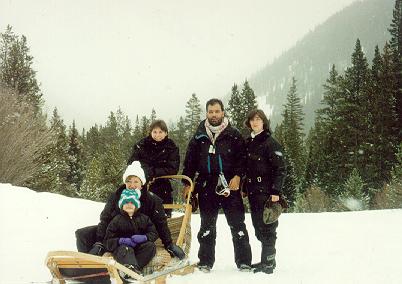
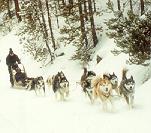
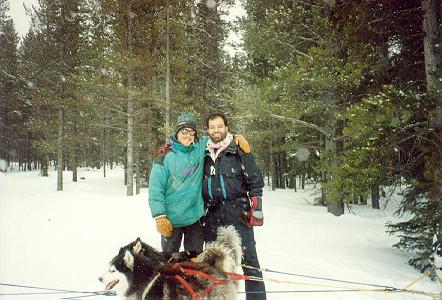
 I think what appeals to me most
about these high ranges is the majesty of the mountains, which gives
me a feeling of peace and communion with nature, and perhaps a degree
of humility at the magnificence of creation around me. Canoeing
is plentiful in the NW Arkansas Ozark Mountains – the place
I've called home for several years. I have a friend who has a large
rural property on the shores of nearby Beaver Lake. A real quiet
spot, covered with lush green forests and hidden away in the hills
– someplace very few people can get to. I love to hang out
there and watch the deer, bald eagles, wild turkeys and other wildlife;
and just to go for walks in the still of the forest, or spend an
afternoon reading a book down by a bubbling brook or clear mountain
stream. The fall is a wonderful time to be out there, when the leaves
are turning, and nature explodes into a rhapsody of dizzy colors.
I think what appeals to me most
about these high ranges is the majesty of the mountains, which gives
me a feeling of peace and communion with nature, and perhaps a degree
of humility at the magnificence of creation around me. Canoeing
is plentiful in the NW Arkansas Ozark Mountains – the place
I've called home for several years. I have a friend who has a large
rural property on the shores of nearby Beaver Lake. A real quiet
spot, covered with lush green forests and hidden away in the hills
– someplace very few people can get to. I love to hang out
there and watch the deer, bald eagles, wild turkeys and other wildlife;
and just to go for walks in the still of the forest, or spend an
afternoon reading a book down by a bubbling brook or clear mountain
stream. The fall is a wonderful time to be out there, when the leaves
are turning, and nature explodes into a rhapsody of dizzy colors.
![]()
 The US has some great
beaches, and I have seen some awesome beaches on the Black Sea in
Romania and Crimea, and on the Mediterranean, the Aegean and the
Caribbean, but I believe that the best place in the world for a
beachside vacation is the northeast of Brazil. Of course the best
time to be in Brazil is in February, during the Carnaval.
It gets quite wild and very touristy in Rio, where most gringos
go. But in the tropical paradise of the northeast, around Salvador,
Fortaleza and Recife, Brazil exhibits a great deal of character
and retains a much more authentic old-world Portuguese flavor –
reminiscent of the days of the pillaging conquistadores e bandeirantes.
For a seaside vacationland, the pristine white gold sands of Brazil's
northeast, flanked by the warm azure waters of the Atlantic, are
a match for no other in the world.
The US has some great
beaches, and I have seen some awesome beaches on the Black Sea in
Romania and Crimea, and on the Mediterranean, the Aegean and the
Caribbean, but I believe that the best place in the world for a
beachside vacation is the northeast of Brazil. Of course the best
time to be in Brazil is in February, during the Carnaval.
It gets quite wild and very touristy in Rio, where most gringos
go. But in the tropical paradise of the northeast, around Salvador,
Fortaleza and Recife, Brazil exhibits a great deal of character
and retains a much more authentic old-world Portuguese flavor –
reminiscent of the days of the pillaging conquistadores e bandeirantes.
For a seaside vacationland, the pristine white gold sands of Brazil's
northeast, flanked by the warm azure waters of the Atlantic, are
a match for no other in the world. ![]()



 most of the kids I was around hated it. But I was
a very large kid for my age and strong as an ox – frequently
got into scraps with boys much older and bigger than me. This
demonstrative ominosity earned me the nickname "The Enforcer
Geek", and the adoration of all the other little nerds,
who sought my protection. It took a long time to live that down.
Well, once a nerd, always a nerd, they say – today I love
playing with computers, software and particularly the web: and
am held by my colleagues and friends as "one of those"
'Net junkies.
most of the kids I was around hated it. But I was
a very large kid for my age and strong as an ox – frequently
got into scraps with boys much older and bigger than me. This
demonstrative ominosity earned me the nickname "The Enforcer
Geek", and the adoration of all the other little nerds,
who sought my protection. It took a long time to live that down.
Well, once a nerd, always a nerd, they say – today I love
playing with computers, software and particularly the web: and
am held by my colleagues and friends as "one of those"
'Net junkies. ![]()
 Images of India
Images of India India is a mosaic of myriad races, religions
and cultures, speaking over 700 mutually unintelligible languages
– of a staggering diversity. The ethno-linguistic heritage
of North India is from Sanskrit, a classical language of the Indo-European
or Indo-Aryan family, closely related to classical Greek, Ostrogothic
and Latin. North Indian languages like Hindi or Bengali (the language
with the fifth largest body of literature in the world), are philologically
closer to German, French or English, than to the South Indian languages
like Tamil or Telugu. South India has an equally rich, but very
different heritage, with its ethno-linguistic roots in another ancient
language – Dravidian – unrelated to the Indo-Aryan family.
Above left is an image from Southern India.
India is a mosaic of myriad races, religions
and cultures, speaking over 700 mutually unintelligible languages
– of a staggering diversity. The ethno-linguistic heritage
of North India is from Sanskrit, a classical language of the Indo-European
or Indo-Aryan family, closely related to classical Greek, Ostrogothic
and Latin. North Indian languages like Hindi or Bengali (the language
with the fifth largest body of literature in the world), are philologically
closer to German, French or English, than to the South Indian languages
like Tamil or Telugu. South India has an equally rich, but very
different heritage, with its ethno-linguistic roots in another ancient
language – Dravidian – unrelated to the Indo-Aryan family.
Above left is an image from Southern India. 
 After a life bequeathed to the Muse of Wanderlust
and sojourns in many lands, I reached America in the '80s –
the Land of the Free and Home of the Brave, and decided
to join the ranks of The Immigrant American.
After a life bequeathed to the Muse of Wanderlust
and sojourns in many lands, I reached America in the '80s –
the Land of the Free and Home of the Brave, and decided
to join the ranks of The Immigrant American.  1) going to the former Soviet Bloc
in the aftermaths of Glasnost, Perestroika and
the fall of communism, and developing marketing and business strategies
and partnerships with some young and entrepreneurial companies in
the fledgling market democracies of Central and Eastern Europe,
1) going to the former Soviet Bloc
in the aftermaths of Glasnost, Perestroika and
the fall of communism, and developing marketing and business strategies
and partnerships with some young and entrepreneurial companies in
the fledgling market democracies of Central and Eastern Europe,
 leaving me intoxicated
with the wine of life and thirsty for ever more – like:
leaving me intoxicated
with the wine of life and thirsty for ever more – like:  • Living through momentous
personal tragedies, wars, a plane crash at sea, being lost in the
desert, learning to survive and be strong in the twilight zones
of the human experience.
• Living through momentous
personal tragedies, wars, a plane crash at sea, being lost in the
desert, learning to survive and be strong in the twilight zones
of the human experience. 
 I have been always
fascinated by
I have been always
fascinated by  foreign cultures and
civilizations and lands and peoples: their food, music, literature,
dance, theatre – all the way to their very philosophical bases
and spiritual cores. The study of world events, the present-day
march of history across our lives and times, the ways in which nations
and peoples come together to run their lives and communities and
countries, and the greater human civilization, are very interesting
to me. What interests me in particular is the way our very diverse
cultures and histories help and hinder, handicap and facilitate
us in this process. Each significant cultural group in the world
has a very different past and a unique value system, but together
we all face a common destiny in a planet that grows ever smaller.
I see trade as the great forger of unity in diversity in this evolutionary
social intercourse. The study of international trade is therefore
of paramount interest to me.
foreign cultures and
civilizations and lands and peoples: their food, music, literature,
dance, theatre – all the way to their very philosophical bases
and spiritual cores. The study of world events, the present-day
march of history across our lives and times, the ways in which nations
and peoples come together to run their lives and communities and
countries, and the greater human civilization, are very interesting
to me. What interests me in particular is the way our very diverse
cultures and histories help and hinder, handicap and facilitate
us in this process. Each significant cultural group in the world
has a very different past and a unique value system, but together
we all face a common destiny in a planet that grows ever smaller.
I see trade as the great forger of unity in diversity in this evolutionary
social intercourse. The study of international trade is therefore
of paramount interest to me. 


 With wines, I have a taste for dessert
wines, sweet white wines like Liebfraumilch and some Romanian wines
from the Murfatlar. I am an extrovert – outgoing, gregarious
and social – far past the tortured moments of my days as a
would-be campus poet and armchair idealogue. While my wild college
days are a thing of the past, entertaining with friends or an evening
on the town are always prospects that attract. And although possessed
of the two left feet of a particularly choreographically-challenged
elephant, I love dancing anyway – not just modern dancing,
but the ageless classics like the waltz and foxtrot, and also the
samba, merengue, lambada and my favorite: the Argentine tango.
With wines, I have a taste for dessert
wines, sweet white wines like Liebfraumilch and some Romanian wines
from the Murfatlar. I am an extrovert – outgoing, gregarious
and social – far past the tortured moments of my days as a
would-be campus poet and armchair idealogue. While my wild college
days are a thing of the past, entertaining with friends or an evening
on the town are always prospects that attract. And although possessed
of the two left feet of a particularly choreographically-challenged
elephant, I love dancing anyway – not just modern dancing,
but the ageless classics like the waltz and foxtrot, and also the
samba, merengue, lambada and my favorite: the Argentine tango.